By Bob Hicks
That quotation comes from Claudia Dreifus’s interview in this morning’s New York Times with Ellen Bialystok, a cognitive neuroscientist who’s spent almost 40 years studying the ways that speaking two languages keeps your mind sharp, even possibly delaying the onset of Alzheimer’s symptoms. (Does that mean that Europeans and Quebecois are smarter longer than most Americans?)
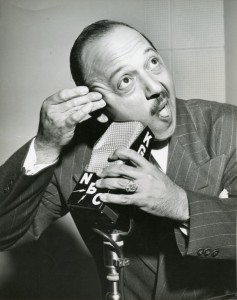 It strikes Mr. Scatter that what Bialystok has to say about research is equally true for that branch of creativity we like to refer to as artistic. An idea takes hold. You follow it. It leads you somewhere that might utterly astonish you. But once you’ve identified it, you need to trust it to lead you where it will. It’s not blind faith. But it is faith. Which doesn’t mean it won’t sometimes lead you down a dark alley for an artistic mugging. But those are the chances you take.
It strikes Mr. Scatter that what Bialystok has to say about research is equally true for that branch of creativity we like to refer to as artistic. An idea takes hold. You follow it. It leads you somewhere that might utterly astonish you. But once you’ve identified it, you need to trust it to lead you where it will. It’s not blind faith. But it is faith. Which doesn’t mean it won’t sometimes lead you down a dark alley for an artistic mugging. But those are the chances you take.
That’s all, folks: Meanwhile, Mr. Scatter has a story in this morning’s Oregonian about the Oregon Jewish Museum‘s new show That’s All, Folks: The Mel Blanc Story, celebrating the life and times of the Portland kid who grew up to be possibly the greatest Hollywood voice actor of all time, supplying the sounds of cartoon characters ranging from Bugs Bunny to Pepe LePew.
 Blanc made a name for himself in Portland radio with shows such as KGW’s Hoot Owls (it was a huge hit in the 1920s and early ’30s, drawing audiences of more than a million a show) before heading for Hollywood and cartoon immortality. Blanc was far more than bilingual: He spoke in about 400 different character voices, which, as Ellen Bialystok might have predicted, kept him alert and peppy until he died at age 81 in 1989.
Blanc made a name for himself in Portland radio with shows such as KGW’s Hoot Owls (it was a huge hit in the 1920s and early ’30s, drawing audiences of more than a million a show) before heading for Hollywood and cartoon immortality. Blanc was far more than bilingual: He spoke in about 400 different character voices, which, as Ellen Bialystok might have predicted, kept him alert and peppy until he died at age 81 in 1989.
One story goes that after a string of successes he asked his bosses at Warner Bros for a raise. No can do, they told him: We can’t afford it. So he asked that he be given a nameline in the credits and they said sure. That’s how he became the first voice actor to be featured in a cartoon’s credits, paving the way for the likes of Jack Black, Eddie Murphy and Robby Benson, the onetime teen heartthrob who revealed big-league Broadway chops as the voice of Beast in Disney’s Beauty and the Beast.
So: No money, but you can have a byline? Sounds like blogging.
*
- Mel Blanc gives himself a close shave for a KGW radio gig. Photo courtesy of Noel Blanc.
- Logo for the radio hit “Hoot Owls,” which featured Blanc. Courtesy Mark Moore, NW Vintage Radio Society.
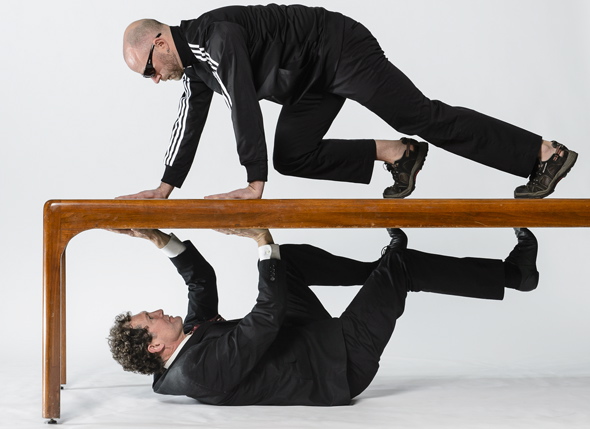
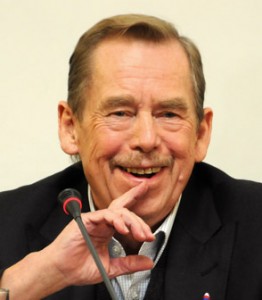 Simek, a native of Prague and chairman of the theater department at Lewis & Clark College, is also the English translator of Havel’s play The Increased Difficulty of Concentration. And although he met Havel just once, he had an intriguing connection with the legendary leader. “The funny thing is that my parents and grandparents were very good friends with his parents,” Simek tells Marty. “When I was born, the Havels gave my parents this cradle — a pink, wooden painted cradle — that Havel himself was cradled in. And I was cradled in it and it still is in my family’s possession.”
Simek, a native of Prague and chairman of the theater department at Lewis & Clark College, is also the English translator of Havel’s play The Increased Difficulty of Concentration. And although he met Havel just once, he had an intriguing connection with the legendary leader. “The funny thing is that my parents and grandparents were very good friends with his parents,” Simek tells Marty. “When I was born, the Havels gave my parents this cradle — a pink, wooden painted cradle — that Havel himself was cradled in. And I was cradled in it and it still is in my family’s possession.”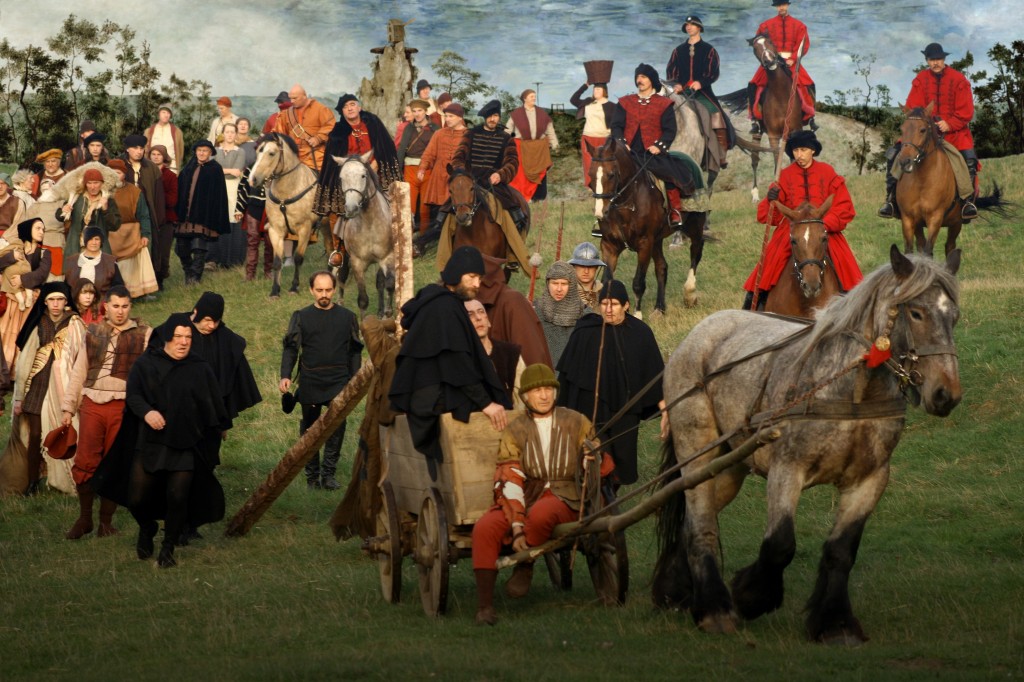 Kino Lorber, Inc.
Kino Lorber, Inc. It strikes Mr. Scatter that what Bialystok has to say about research is equally true for that branch of creativity we like to refer to as artistic. An idea takes hold. You follow it. It leads you somewhere that might utterly astonish you. But once you’ve identified it, you need to trust it to lead you where it will. It’s not blind faith. But it is faith. Which doesn’t mean it won’t sometimes lead you down a dark alley for an artistic mugging. But those are the chances you take.
It strikes Mr. Scatter that what Bialystok has to say about research is equally true for that branch of creativity we like to refer to as artistic. An idea takes hold. You follow it. It leads you somewhere that might utterly astonish you. But once you’ve identified it, you need to trust it to lead you where it will. It’s not blind faith. But it is faith. Which doesn’t mean it won’t sometimes lead you down a dark alley for an artistic mugging. But those are the chances you take.
 Mr. Scatter noticed this pernicious form of marketing and advertising breathlessness beginning as a trickle a couple of years ago, and it’s become an all-taps-open flood. The most ubiquitous torrent is the “major motion picture event” — which means “movie that cost a lot to make and needs to make a whole lot more to recoup its costs,” or just plain “new movie” — but it’s spread to many other areas as well. A rainstorm is a “weather event.” A sale on socks at the mall is a “merchandising event.” A rational political speech is an “imaginary event.” Just kidding on that last one.
Mr. Scatter noticed this pernicious form of marketing and advertising breathlessness beginning as a trickle a couple of years ago, and it’s become an all-taps-open flood. The most ubiquitous torrent is the “major motion picture event” — which means “movie that cost a lot to make and needs to make a whole lot more to recoup its costs,” or just plain “new movie” — but it’s spread to many other areas as well. A rainstorm is a “weather event.” A sale on socks at the mall is a “merchandising event.” A rational political speech is an “imaginary event.” Just kidding on that last one.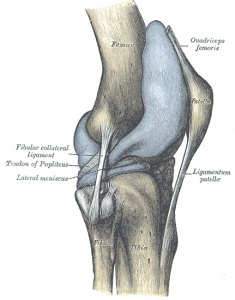 On the other hand, the Lord of the Dance 3D ad reminded Mr. Scatter that today is St. Patrick’s Day, and then he recalled where he was and what he was doing exactly three years ago: lying on a hospital operating table, his left leg splayed open like a flounder getting filleted, while a highly gifted surgeon inserted what is essentially an entirely new and artificial knee. Loyal readers might recall this post from March 17, 2009,
On the other hand, the Lord of the Dance 3D ad reminded Mr. Scatter that today is St. Patrick’s Day, and then he recalled where he was and what he was doing exactly three years ago: lying on a hospital operating table, his left leg splayed open like a flounder getting filleted, while a highly gifted surgeon inserted what is essentially an entirely new and artificial knee. Loyal readers might recall this post from March 17, 2009, 
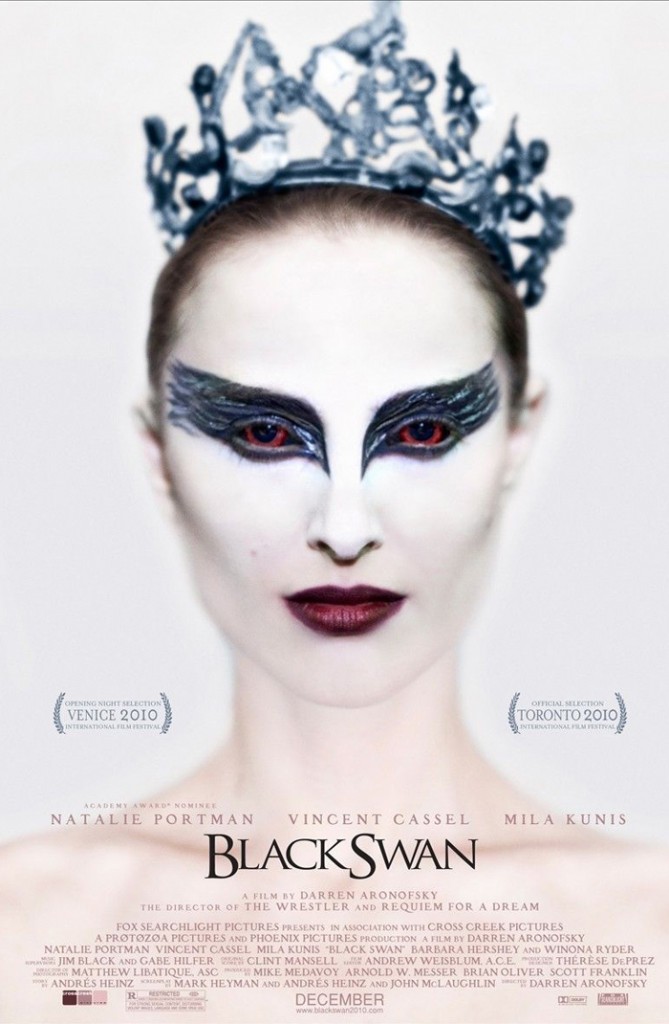 Black Swan is not a film about ballet.
Black Swan is not a film about ballet.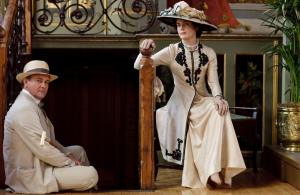
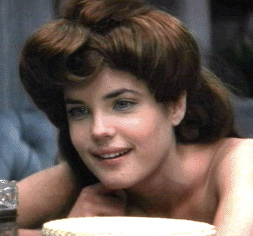 Beauty fades, of course, or rather, it changes. Now, at 49, McGovern is still beautiful, but in a fully mature, more experienced, less unnerving way — which, from some vantages, makes her even more beautiful: It’s a beauty anchored by reality.
Beauty fades, of course, or rather, it changes. Now, at 49, McGovern is still beautiful, but in a fully mature, more experienced, less unnerving way — which, from some vantages, makes her even more beautiful: It’s a beauty anchored by reality.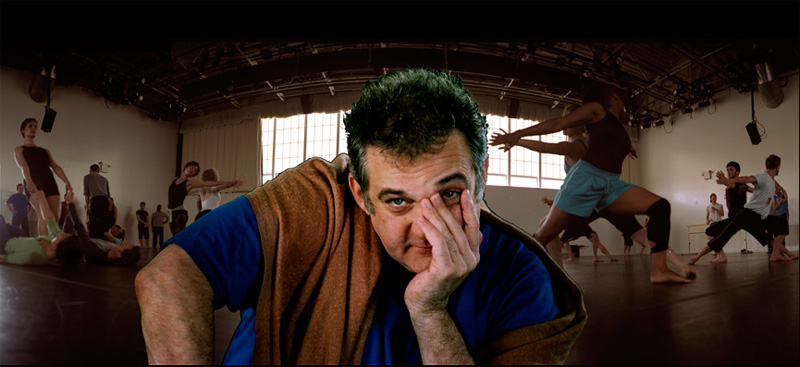
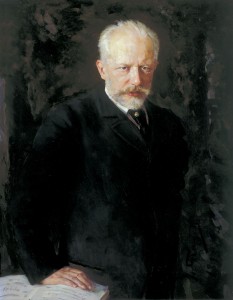 You still occasionally hear people refer to it as Morris’s winking bad-boy spoof of the ubiquitous holiday story ballet, but people who think that about it (a) aren’t paying a lot of attention to the dance itself, and (b) apparently haven’t read the
You still occasionally hear people refer to it as Morris’s winking bad-boy spoof of the ubiquitous holiday story ballet, but people who think that about it (a) aren’t paying a lot of attention to the dance itself, and (b) apparently haven’t read the  He shouldn’t have been, of course. After all, Deemer knows this stuff. He teaches screenwriting at Portland State University, and is a terrific playwright, and a pioneer in the expanded-universe form of hyperdrama, and he’d already done another ultra-low-budget film, Deconstructing Sally, which we wrote about a little over a year ago
He shouldn’t have been, of course. After all, Deemer knows this stuff. He teaches screenwriting at Portland State University, and is a terrific playwright, and a pioneer in the expanded-universe form of hyperdrama, and he’d already done another ultra-low-budget film, Deconstructing Sally, which we wrote about a little over a year ago